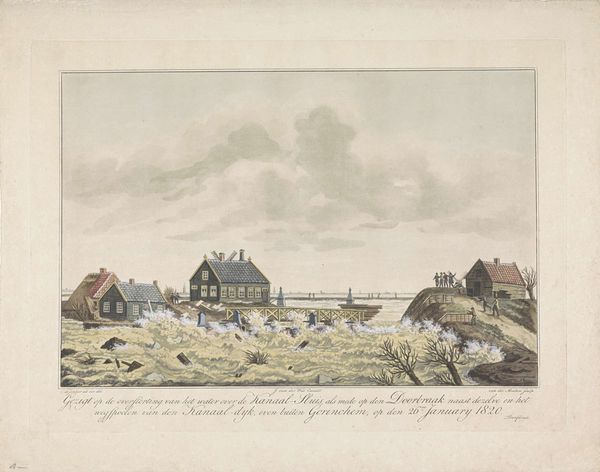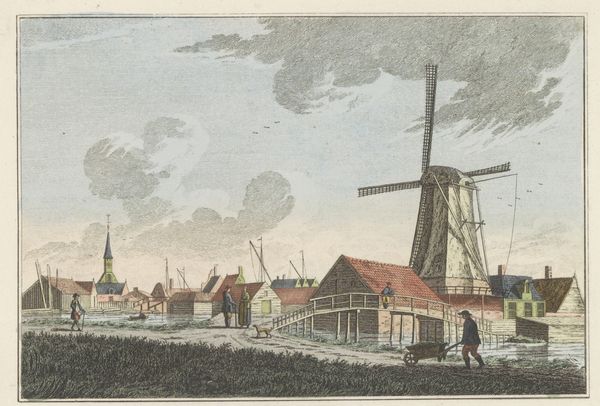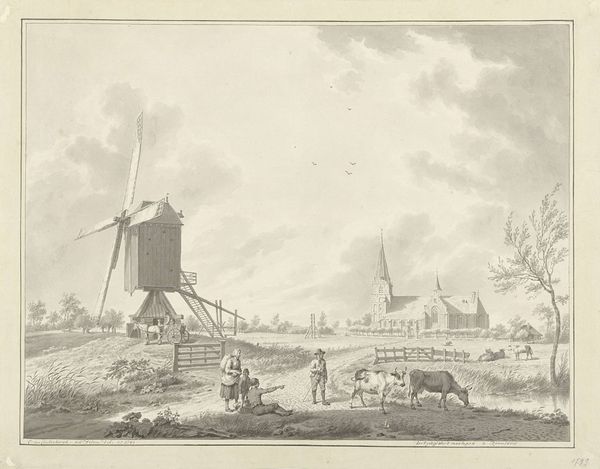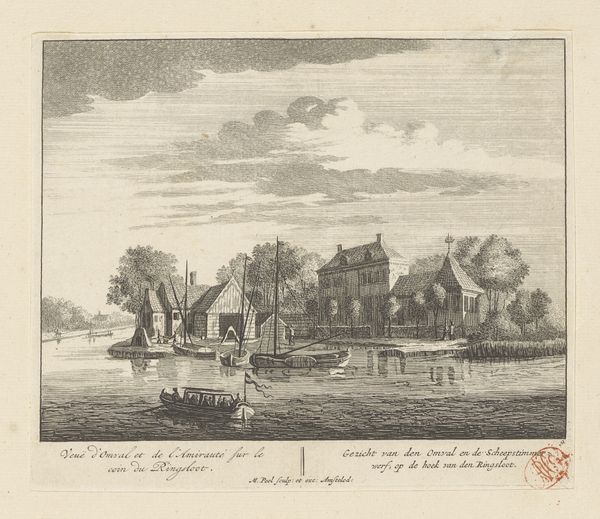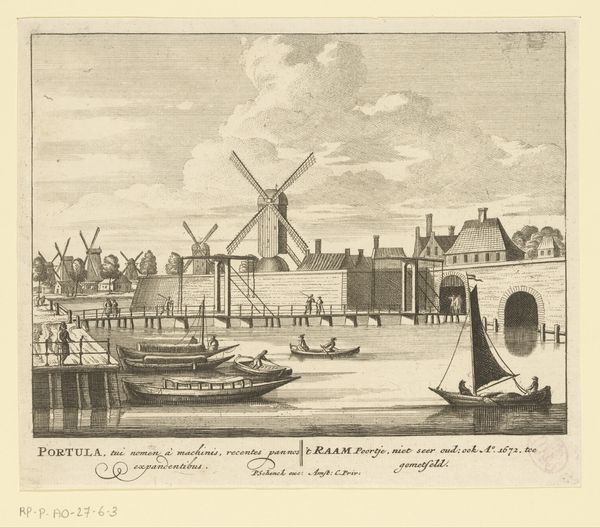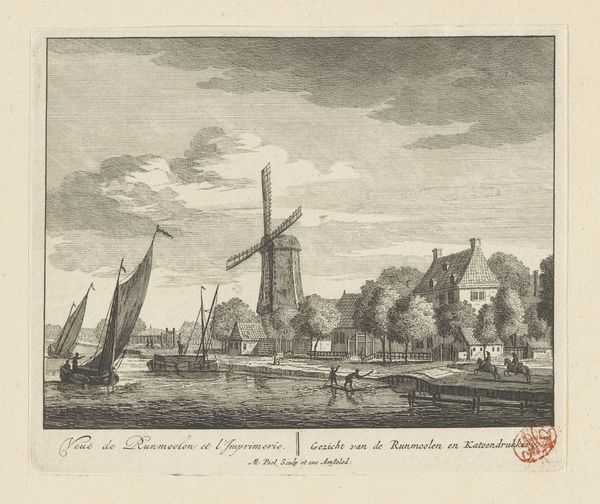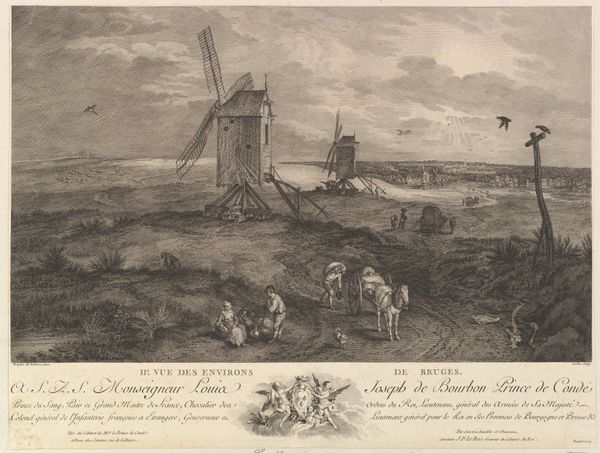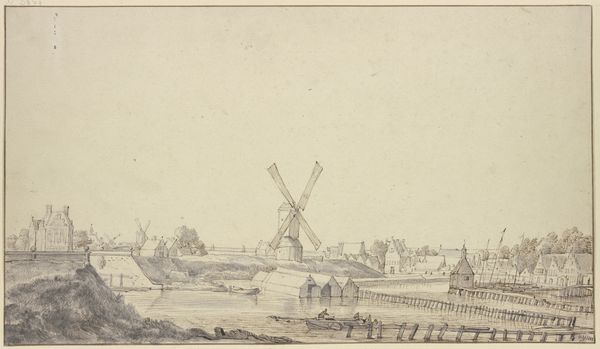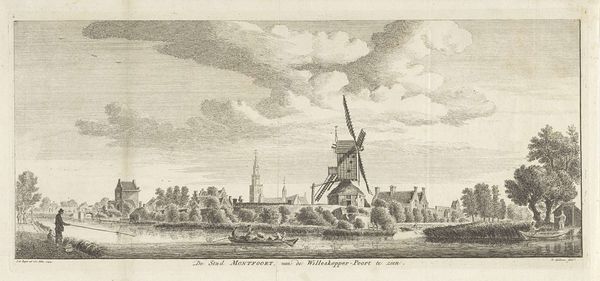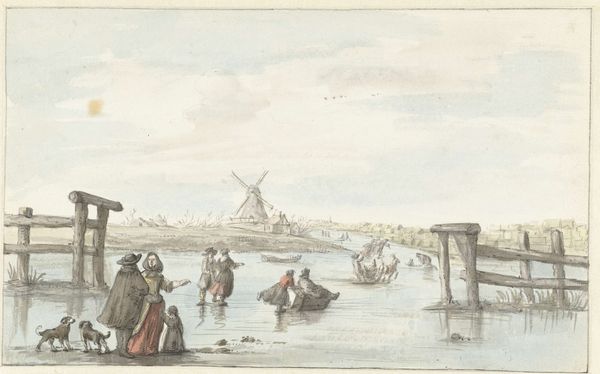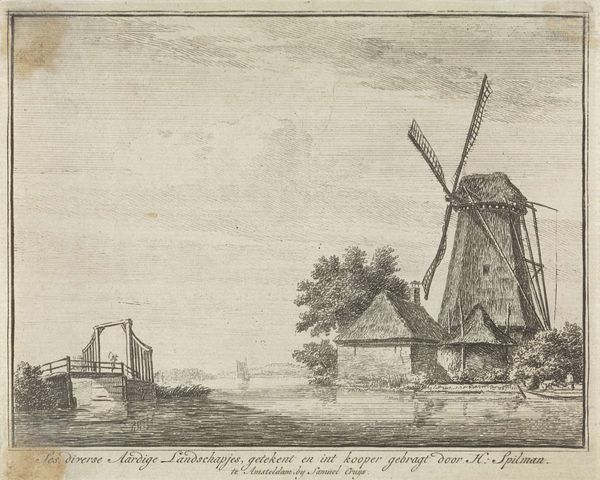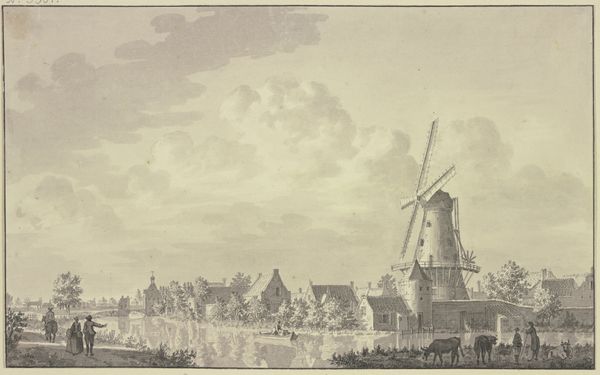
print, engraving
# print
#
old engraving style
#
landscape
#
romanticism
#
19th century
#
cityscape
#
engraving
Dimensions: height 316 mm, width 433 mm
Copyright: Rijks Museum: Open Domain
Editor: This is “Overstroming bij de Arkelse dam bij Gorinchem,” or “Flood at the Arkelse Dam near Gorinchem,” an engraving from 1820 by Roelof van der Meulen. It’s currently housed at the Rijksmuseum. I’m immediately struck by how fragile the buildings look against the water – almost as though the built environment is failing against the forces of nature. What’s your take? Curator: I'm drawn to the means of production itself. This isn’t just a depiction of a flood; it’s an engraving, a mass-producible image intended for circulation. Consider the social context: Who was this print *for*, and what role did it play in disseminating information or shaping public perception about such disasters? It’s a romantic depiction to be sure. Editor: That's fascinating. So you are thinking about who got to own and consume the image? Curator: Exactly. Engravings like this weren’t unique objects for the wealthy; they represent an early form of visual news accessible to a broader segment of society. Think about the labor involved: the engraver, the printer, the distributor. Each step contributed to shaping the narrative of this event. It is a bleak narrative, by the way. Editor: And the materials themselves – the paper, the ink, the metal plate used for the engraving – they all have their own histories. So, the material tells a story. Curator: Precisely. The choice of engraving, instead of, say, painting, tells us about intended distribution, market and access. How might the materiality of the engraving medium have shaped or constrained the artist's representation of the flood? Editor: I see what you mean. It definitely reframes my understanding. I guess thinking about the materiality moves the focus from a single artist's view to a wider network of production, and consumption within society. Curator: Indeed. Focusing on process and materials shifts the focus from romantic individualism to broader social and economic factors shaping both the disaster itself, and its visual representation.
Comments
No comments
Be the first to comment and join the conversation on the ultimate creative platform.
